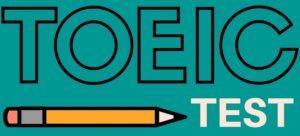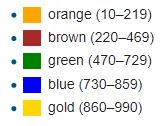 TOEIC Test
TOEIC Test
The Test of English for International Communication® (TOEIC) is an English language test designed specifically to measure the everyday English skills of people working in an international environment.
The TOEIC Writing test is composed of tasks that assess grammar, relevance of sentences to the pictures, quality and variety of sentences, vocabulary, organization, and whether the opinion is supported with reason and/or examples. Both assessments use a score scale of 0 – 200.
TOEIC Listening & Reading Test
The TOEIC Listening & Reading Test lasts two hours [45 minutes for Listening, and 75 minutes for Reading]. It consists of 200 multiple-choice items evenly divided between the listening and reading comprehension section. Each candidate receives independent scores for listening and reading comprehension on a scale from 5 to 495 points. The total score adds up to a scale from 10 to 990 points. The TOEIC certificate exists in five colors, corresponding to achieved results:

TOEIC Speaking & Writing Test
The TOEIC Speaking & Writing Tests were introduced in 2006. Test takers receive separate scores for each of the two tests, or they can take the Speaking test without taking the Writing test and vice versa. The Speaking test assesses pronunciation, intonation and stress, vocabulary, grammar, cohesion, relevance of content and completeness of content, while the Writing test assess grammar, relevance of sentences to the pictures, quality and variety of sentences, vocabulary, organization, and whether the opinion is supported with reason and/or examples. The tests are designed to reflect actual English usage in the workplace, though they do not require any knowledge of specialized business terms. The TOEIC Speaking Test takes approximately 20 minutes to complete; the TOEIC writing test lasts approximately 60 minutes. Each test has a score range between 0-200, with test takers grouped into eight proficiency levels for Speaking and nine proficiency levels for Writing. [3]
Institutional TOEIC Test
In addition to the public testing program, there are also versions that individual businesses and educational institutions can purchase for internal use. These “Institutional” TOEIC tests can be administered at the organization’s own choice of location and time to its employees or students.
How the TOEIC Listening and Reading test is scored
Scores on the TOEIC Listening and Reading test are determined by the number of correct answers. The number of correct responses on each section is converted to a scaled score. Three TOEIC Listening and Reading scaled scores are given for each examinee:
- οne for the Listening Section
- οne for the Reading Section
- οne Total Score that consists of the sum of the Listening Section and Reading Section sub-scores.
Each sub-score can range from 5 to 495 points. The Total Score ranges from 10 to 990. There is no negative scoring. The Total Score consists of the sum of the Listening Section and Reading Section sub-scores.
In 2016, the TOEIC system changed for the first time in 10 years. ETS said that the changes to the TOEIC would reflect the use of online communication in modern society.
In Japan and South Korea, a new version of TOEIC was created that includes chart comprehension questions.
TOEIC in Japan
The Institute for International Business Communication (財団法人国際ビジネスコミュニケーション協会 Zaidanhōjin Kokusai Bijinesu Komyunikēshon Kyōkai) operates the TOEIC test in Japan, where nearly 2.4 million people (as of 2014[9]) take the test; 1.3M for institutional program (IP) and 1.1M for secure program (SP).
There are two ways to take the TOEIC test properly. One is called the TOEIC SP Test (Secure Program Test; 公開テスト Kōkai Tesuto), in which one can take the test individually or in a group on specified dates at a test centre specified by the TOEIC Steering Committee. The other is the TOEIC Institutional Program (IP) Test (団体特別受験制度 Dantai Tokubetsu Juken Seido), in which an organization can choose the date and administer the test at its convenience in accordance with the TOEIC Steering Committee. The TOEIC SP Test was renewed on May 2006, followed by the TOEIC IP Test in April 2007 in line so that it would be with the SP Test.
More and more companies use TOEIC scores for personnel assessment instead of the homegrown STEP Eiken test organized by the Society for Testing English Proficiency (STEP)(日本英語検定協会主催実用英語技能検定試験「英検」 Nihon Eigo Kentei Kyōkai Shusai Jitsuyō Eigo Ginō Kentei Shiken “Eiken”). The TOEIC Speaking Test/Writing Test started on January 21, 2007 in addition to the TOEIC SP Test and the TOEIC IP Test.
TOEIC in South Korea
Toward the end of 2005, there was a shift in South Korea, regarded as the second biggest consumer of TOEIC per capita. However, a person’s TOEIC score is still a major factor in hiring persons for most professional jobs in South Korea. Starting in 2011, Korean universities will no longer be allowed to use TOEIC and TOEFL scores as part of the admission process. However, many Universities in Korea still require a minimum score of 900.[13] This is apparently to discourage private English education (there are many private institutions that teach TOEIC-based classes). Another English proficiency test, TEPS (developed by Seoul National University, Chosun Ilbo), has been developed and may replace the status of TOEIC.
TOEIC in Europe
In France, some Grandes écoles require a TOEIC score of at least 785 to award the diploma. This policy has been criticized, as it makes state-awarded diplomas dependent on a private institution—despite the fact that it was not the private institution that set the 785 mark but a recommendation from the Commission des titres d’ingénieur indicating a B2+ level on the Common European Framework of Reference for Languages. Students that cannot achieve a 785 mark are offered to validate their diploma by other means in most of the schools. Some institutions delay the diploma for 1 year after the end of the studies in that case.
In Greece, TOEIC is accepted by Supreme Council for Civil Personnel Selection|ASEP]], the organisation responsible for hiring new employees to work for the government. It is administrated by the Hellenic American Union and it is offered weekly in most major cities in Greece.
TOEIC in the United States
Both the TOEIC Listening & Reading and the TOEIC Speaking & Writing tests are now available in the United States. While the TOEIC Listening & Reading test has been available for decades, the TOEIC Speaking & Writing test was introduced in the United States only in 2009. Registration for the TOEIC Speaking & Writing test is handled by the English4Success division of the nonprofit organization Amideast.
TOEIC in Thailand
The Center for Professional Assessment offers regular institutional testing every Monday through Saturday at 9:00AM and 1:00PM (local time). The TOEIC test is a two-hour multiple-choice test that consists of 200 questions divided into 100 questions each in listening comprehension and reading comprehension. Each candidate receives independent marks for written and oral comprehension on a scale from 5 to 495 points. The total score adds up to a scale from 10 to 990 points.
TOEIC Bridge Test
ETS also administers another version of the TOEIC test called TOEIC Bridge. The TOEIC Bridge test targets beginning and intermediate learners and consists of 100 multiple-choice questions, requiring about one hour of testing time.
TOEIC Bridge in Chile
The TOEIC Bridge was used in Chile as part of the 2010 SIMCE test.
Extracts from Wikipedia.